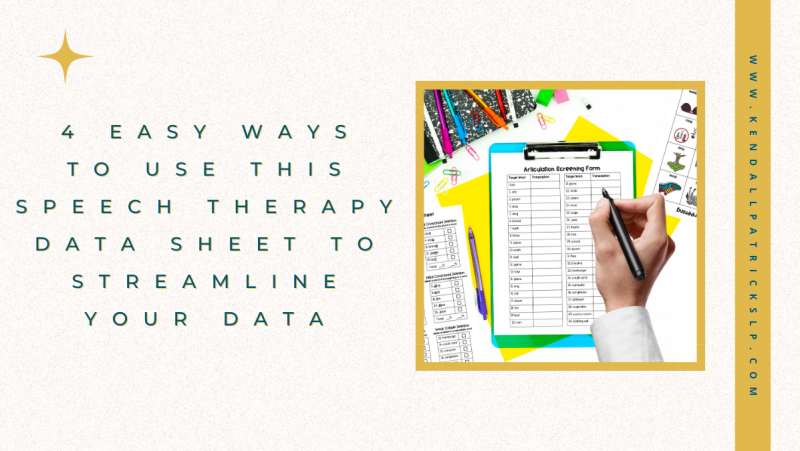How to use this speech therapy data sheet to make your life easier! Speech therapy data collection can look a little different for every therapist as we all have our different methods that work for us. However, we do need to make sure that we are using valid and reliable methods to collect our therapy data. The American Speech-Language-Hearing Association (ASHA) describes baseline data as that which is “used to determine the quantitative level for the indicators of success and indicates how much change will occur if the desired outcome is achieved” (Dublinske, ASHA).
Basically, we need to know where our students are starting (in real numbers # correct / # of trials or %) so that we can track their growth to show strengths, weaknesses, and mastery of goals.
So, how do we do this without constantly testing and drilling our students leaving no time for teaching new skills and speech/language instruction? Read more for all of my tips for speech therapy data collection.
If you want access to some of my favorite freebies, enter your email below:
Speech Therapy Data Collection
It has taken me YEARS to find a data collection method that works for me and that I found simple to use on a regular basis. I’ve tried a little bit of everything and I’ve learned that what works for one person, may not work for another. Which is totally fine! I spent time exploring different options, reading about what other SLPs use, and downloading different types of data sheets and progress monitoring tools, so I could figure out what did and did not work for me.
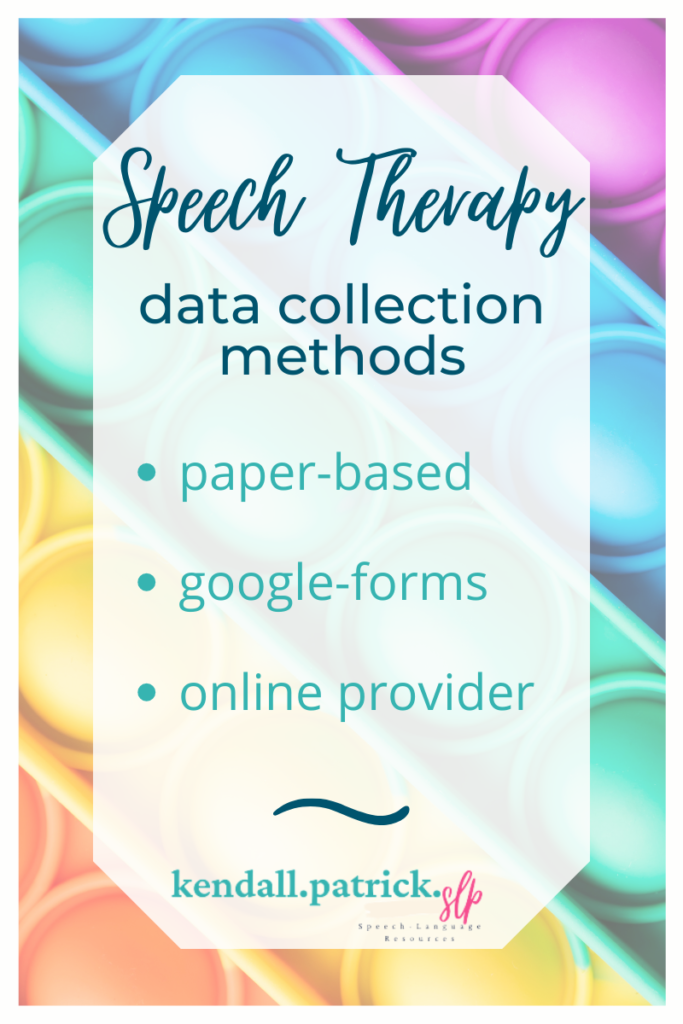
Speech Therapy Data Collection Methods
- Paper-based (see my favorites and how I use them in the next section)
- Google Forms (check out how I use this process here)
- Online Provider (I use Swivel Scheduler now and LOVE IT)
Speech Therapy Data Collection Forms
For the most part, I am still old school and I like to write things down on paper. I am trying to branch out and use more technology, but I still love my paper. (I still use a paper planner too!)
If you’re interested in trying out the speech therapy data sheet templates that worked for me, I have some in my store. This is a collection of data sheets that I use most often for my different groups and individual therapy. I have a lot of different types of groups and sizes of groups. It is important to take into account the various service delivery models you will be utilizing for your caseload.
I usually have a lot of groups that are seen twice a week for 30 minutes each and that makes up most of my schedule. But I also see kids in a “5-minute kid” model for articulation daily, I have some groups that come 3 or 4 days because of higher needs or the need for more frequent services, some students that are seen just once a week (e.g., in a fluency or social skills group) and I also push-in to our full-time ESE classroom.
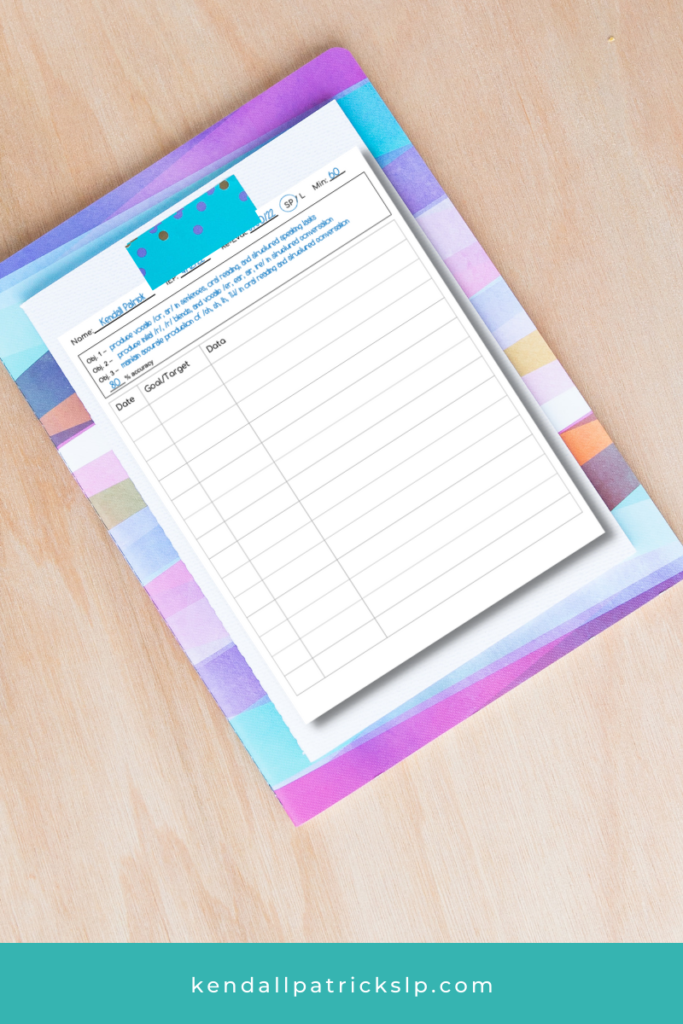
What other SLPs are saying about these sheets:
“I love informing my client’s parents what we did and what activities we completed to accomplish these goals so this is a great resource.” 5/5 Stars (extremely satisfied)
Sample FREEBIE in the Library
Not sure if paper speech therapy data sheets are for you? Try a sample of mine here in my free resource library. Ready to print and test out in your next session.
Progress Monitoring Speech Therapy
This is how I gather quick baselines and frequently progress monitor for my kiddos with articulation goals.
Check to see if they can produce their target sounds in isolation. If no – stop there. That’s where we need to start in therapy. If yes for some, check-in syllables and words (with 3-5 targets maximum). I use an app on my phone for word lists (Word Vault – free version) but you can use any articulation decks, printed word lists, or apps you have.
This method allows me to move quickly through all targets for my students with a few sound errors.
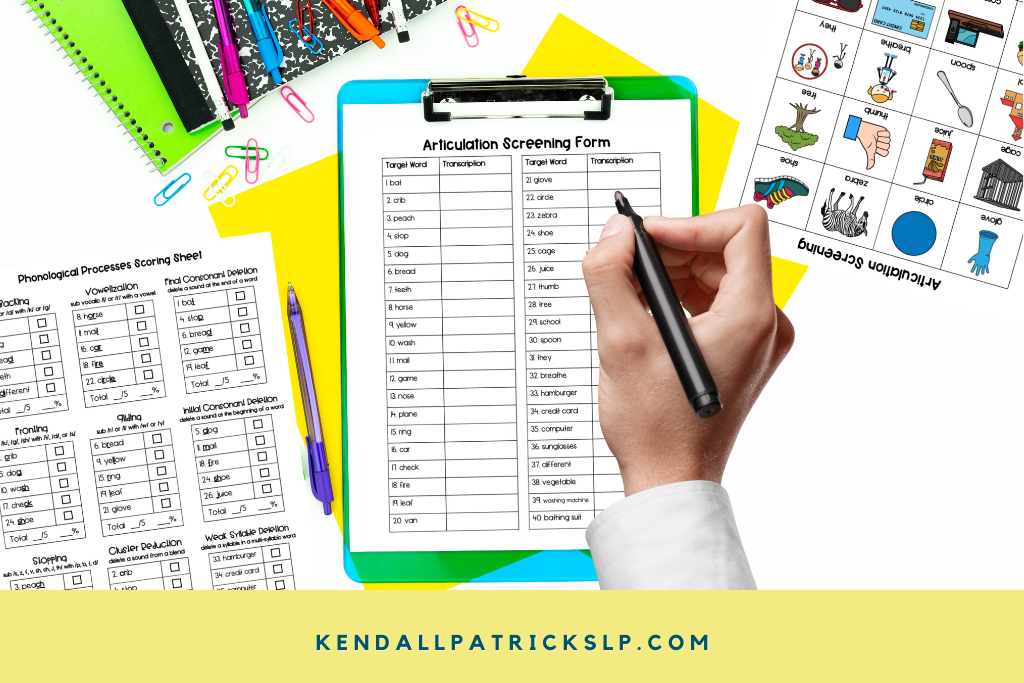
For more severe delays and disorders:
Now, for my students with more severe articulation and/or phonological delays, that’s where it can get a little more tricky. If I were to try to go through every single sound error in every position, it would take forever. I also may not get great information about sound patterns and situations they may struggle/not struggle with. Not to mention how incredibly frustrating this can be for the child.
Then, I would use a quick articulation/phonological progress monitoring tool to get a snapshot of the child’s overall sound errors. (This also doubles as a screening tool when needed). It not only gives me a great place to start but also gives me a quick, visual, easy way to progress-monitor throughout the year and before IEP updates.
Speech Therapy Data Collection Sheets
These speech therapy data collection forms are perfect for progress monitoring speech therapy growth, speech therapy data tracking, and speech screening.
What’s Included:
- brief articulation screening pictures & scoring sheet
- full articulation screening pictures and form
- sound errors scoring sheet
- phonological processes scoring sheet
- articulation progress monitoring by sound
- phonological processes progress monitoring
- developmental norms reference sheet
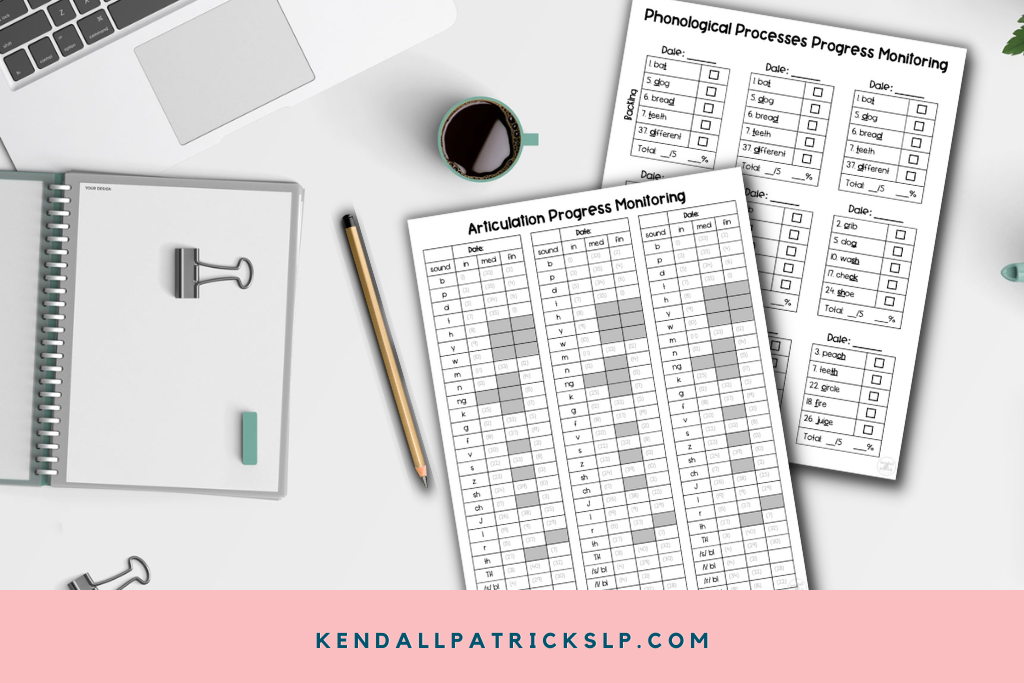
Speech Therapy Data Tracking Sheets
The additional scoring sheets can be used for progress monitoring throughout the school year to mark progress in therapy
Speech Screening Form
Use the brief or full screeners as quick informal assessments, classroom screeners, or to gather baseline data for a transfer student or students at the beginning of the year.
You can use the sound errors scoring sheet to get an overview of target sounds to be addressed in therapy and/or the phonological processes scoring sheet to get an idea of any patterns in their speech to target in therapy
What other SLPs are saying about these forms:
“To be honest, I purchased this for the phonological processes sheet because I was so impressed by it and how compact yet thorough it looked. This is easily utilized with younger students, and I was able to use it right away. Great purchase!”
“This was a quick and easy informal assessment to use at the beginning of the school year to see exactly where my kids were functioning after summer break!”
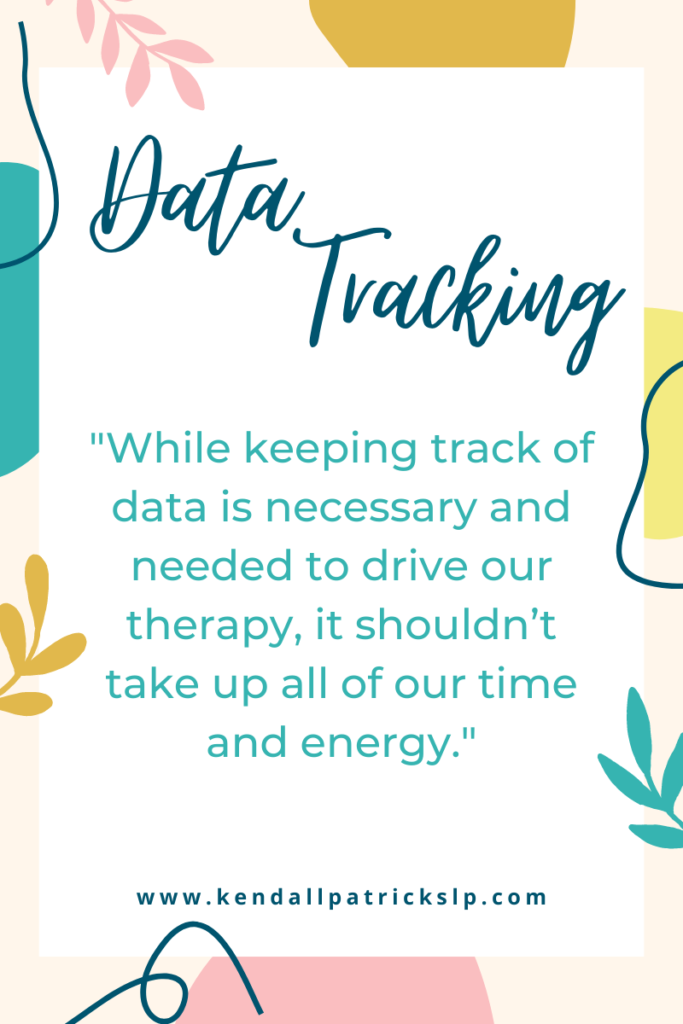
Speech Therapy Data Tracking
While keeping track of data is necessary and needed to drive our therapy, it shouldn’t take up all of our time and energy. I have tested and trialed many different data therapy tracking methods to see what works best for me (and my students so that I may give them as much of my attention as possible). While I do like to use pen and paper (and still use an old-school planner), in the past couple of years I have tried electronic data tracking and it has made my life so much easier.
Speech Therapy Data Tracking App
Right now, I am using Swivel Scheduler and it has been a game-changer for me. Once you enter your students’ info, their goals, and schedule – then everything is ready for you each day to put in your activity (if you’d like) and take data on the spot (with correct/incorrect buttons and prompt buttons). Then it creates a graph and averages percentage for you which makes progress report and IEP-writing time a breeze! I highly recommend checking it out.
Speech Therapy Report Writing Example
If you are just starting out in the schools (or any new setting I imagine), then the data-tracking and the paperwork in general can be overwhelming! I create and use templates to make the paperwork process a bit easier and less time-consuming. Want to check out one of my templates? Head over to my free resource library to download a copy of my report-writing template and see if it helps you as much as it helps me.
For More Speech Therapy Data Sheet Ideas, check out these sites:
FREE PRINTABLE + DIGITAL SPEECH THERAPY DATA SHEETS from Busy Bee Speech
The Best Way to Collect Speech Therapy Data from SLP Now
SLPs and Data Collection from Kayla SLP
Don’t forget to check out my freebie library, access it here:
I hope you found the information about using this speech therapy data sheet for your data collection needs helpful. Please leave a comment or shoot me an email if you want to share some of your favorite data collection methods or favorite speech therapy data sheet.

